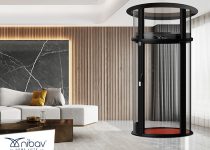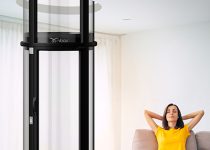Which is better PVC or wood?

In the world of construction and home improvement, choosing the right material for your projects is crucial. Two popular options that often come head-to-head are PVC (Polyvinyl Chloride) and wood. Both materials have their strengths and weaknesses, and the choice between them can significantly impact the outcome of your project. In this comprehensive guide, we’ll explore the pros and cons of PVC and wood, helping you make an informed decision for your next undertaking.
Understanding PVC and Wood
What is PVC?
PVC, or Polyvinyl Chloride, is a synthetic plastic polymer widely used in construction, plumbing, and various other industries. It’s known for its durability, versatility, and resistance to moisture and chemicals.
What is Wood?
Wood is a natural, renewable resource that has been used in construction and crafting for thousands of years. It comes in various types, each with unique characteristics and applications.
Comparing PVC and Wood: Key Factors
1. Durability and Longevity
PVC:
- Highly resistant to rot, decay, and insect infestation
- Does not warp, split, or crack easily
- Can last for decades with minimal maintenance
Wood:
- Susceptible to rot, decay, and insect attacks if not properly treated
- May warp, split, or crack over time, especially when exposed to moisture
- Lifespan varies depending on wood type and maintenance, but generally shorter than PVC
2. Maintenance Requirements
PVC:
- Low maintenance
- Easy to clean with soap and water
- Does not require painting or staining
Wood:
- Requires regular maintenance
- Needs periodic staining, sealing, or painting to protect against the elements
- May need repairs or replacement of damaged sections over time
3. Aesthetics and Versatility
PVC:
- Available in a wide range of colors and textures
- Can mimic the appearance of wood or other materials
- Limited ability to change appearance after installation
Wood:
- Natural, warm appearance that many find appealing
- Can be stained or painted in various colors
- Offers a classic, timeless look
- Can be easily modified or refinished to change appearance
4. Environmental Impact
PVC:
- Non-biodegradable and difficult to recycle
- Production process can release harmful chemicals
- Long lifespan reduces the need for replacement and waste
Wood:
- Renewable resource when sourced responsibly
- Biodegradable and easily recyclable
- Carbon-neutral when harvested sustainably
- Shorter lifespan may lead to more frequent replacements
5. Cost Considerations
When it comes to pvc vs plywood price, there are several factors to consider:
PVC:
- Generally more expensive upfront
- Lower long-term costs due to minimal maintenance requirements
- Price may vary depending on quality and manufacturer
Wood (including plywood):
- Usually less expensive initially
- Higher long-term costs due to maintenance and potential replacements
- Price varies greatly depending on wood type and quality
6. Weather Resistance
PVC:
- Excellent resistance to moisture, UV rays, and temperature fluctuations
- Does not rot or decay in wet conditions
- Maintains its shape and integrity in various climates
Wood:
- Can be affected by moisture, leading to swelling or shrinking
- May fade or degrade when exposed to prolonged sunlight
- Performance varies depending on wood type and treatment
7. Strength and Structural Integrity
PVC:
- High strength-to-weight ratio
- Consistent performance and predictable behavior
- May become brittle in extremely cold temperatures
Wood:
- Varies in strength depending on type and grade
- Offers good load-bearing capabilities when properly engineered
- Natural flexibility can be advantageous in certain applications
Applications: Where PVC and Wood Excel
PVC’s Strong Suits
- Outdoor Furniture
- Window Frames and Doors
- Plumbing Pipes and Fittings
- Decking and Fencing
- Roofing Materials
Wood’s Winning Areas
- Interior Furniture and Cabinetry
- Structural Framing
- Flooring
- Decorative Elements and Moldings
- Custom Woodworking Projects
Making the Right Choice: Factors to Consider
When deciding between PVC and wood for your project, consider the following:
- Project Requirements: What specific needs does your project have?
- Budget: Consider both initial and long-term costs.
- Environmental Concerns: How important is sustainability to you?
- Aesthetic Preferences: What look are you aiming for?
- Maintenance Willingness: How much time and effort can you dedicate to upkeep?
- Climate: What weather conditions will the material be exposed to?
- Intended Lifespan: How long do you need the material to last?
Innovative Uses of PVC and Wood
PVC Innovations
- 3D Printed PVC Structures
- PVC-based Composites for Enhanced Performance
- Recycled PVC Products for Eco-friendly Applications
Wood Innovations
- Cross-Laminated Timber for Tall Buildings
- Wood-Plastic Composites for Improved Durability
- Thermally Modified Wood for Enhanced Weather Resistance
Q1: Is PVC safer than wood for children’s furniture?
A1: PVC can be a safe option for children’s furniture as it’s easy to clean and resistant to moisture. However, ensure you choose PVC products certified as free from harmful additives. Wood, when properly finished, is also safe and may be preferred by those seeking natural materials.
Q2: Can PVC really look like wood?
A2: Yes, modern PVC manufacturing techniques can create products that closely mimic the appearance of wood, including texture and grain patterns. However, discerning eyes may still be able to tell the difference up close.
Q3: Is wood always more environmentally friendly than PVC?
A3: Not necessarily. While wood is a renewable resource, its environmental impact depends on sourcing and production methods. Sustainably harvested wood can be very eco-friendly. PVC, despite being synthetic, has a long lifespan and can be recycled, potentially reducing its overall environmental impact.
Q4: How does the pvc vs plywood price comparison work for large projects?
A4: For large projects, PVC often has a higher upfront cost compared to plywood. However, when factoring in long-term maintenance and replacement costs, PVC may prove more economical over time. It’s essential to consider the specific requirements and lifespan of your project when comparing costs.
Q5: Can I paint PVC to change its color later?
A5: While it’s possible to paint PVC, it requires special preparation and specific types of paint to adhere properly. Wood, on the other hand, is generally easier to repaint or refinish.
Q6: Which material is better for outdoor use in extreme weather conditions?
A6: PVC generally performs better in extreme weather conditions due to its resistance to moisture, UV rays, and temperature fluctuations. However, certain types of treated or naturally weather-resistant woods can also perform well outdoors.
Q7: Is there a significant difference in installation difficulty between PVC and wood?
A7: Wood is often easier to work with using traditional carpentry tools and techniques. PVC may require specialized tools and methods, especially for cutting and joining. However, PVC’s consistency can make it easier to achieve precise fits in some applications.
Conclusion
The choice between PVC and wood ultimately depends on your specific project requirements, budget, and personal preferences. PVC offers excellent durability, low maintenance, and weather resistance, making it ideal for outdoor applications and areas prone to moisture. Its long lifespan and consistent performance can justify the higher upfront costs in many scenarios.
Wood, on the other hand, brings natural beauty, versatility, and a timeless appeal to projects. It’s often more budget-friendly initially and allows for easier customization and refinishing. However, it requires more maintenance and may have a shorter lifespan in challenging environments.
When considering the pvc vs plywood price, remember to factor in long-term costs and performance. While plywood might offer cost savings upfront, PVC’s durability and low maintenance requirements could provide better value over time, especially in high-stress applications.
Ultimately, both materials have their place in construction and home improvement. By carefully assessing your project’s needs, environmental conditions, and your personal preferences, you can make an informed decision that will serve you well for years to come. Whether you choose the modern resilience of PVC or the classic charm of wood, your project can achieve both functionality and beauty with the right material selection.
--------------------------------
Guestbeat.com Notice!
Audience discretion is needed, Read TOS.
Submit Guest Post / Read Latest / Category List
App & Rate-Us / Subscribe Daily Newsletter (FREE)


